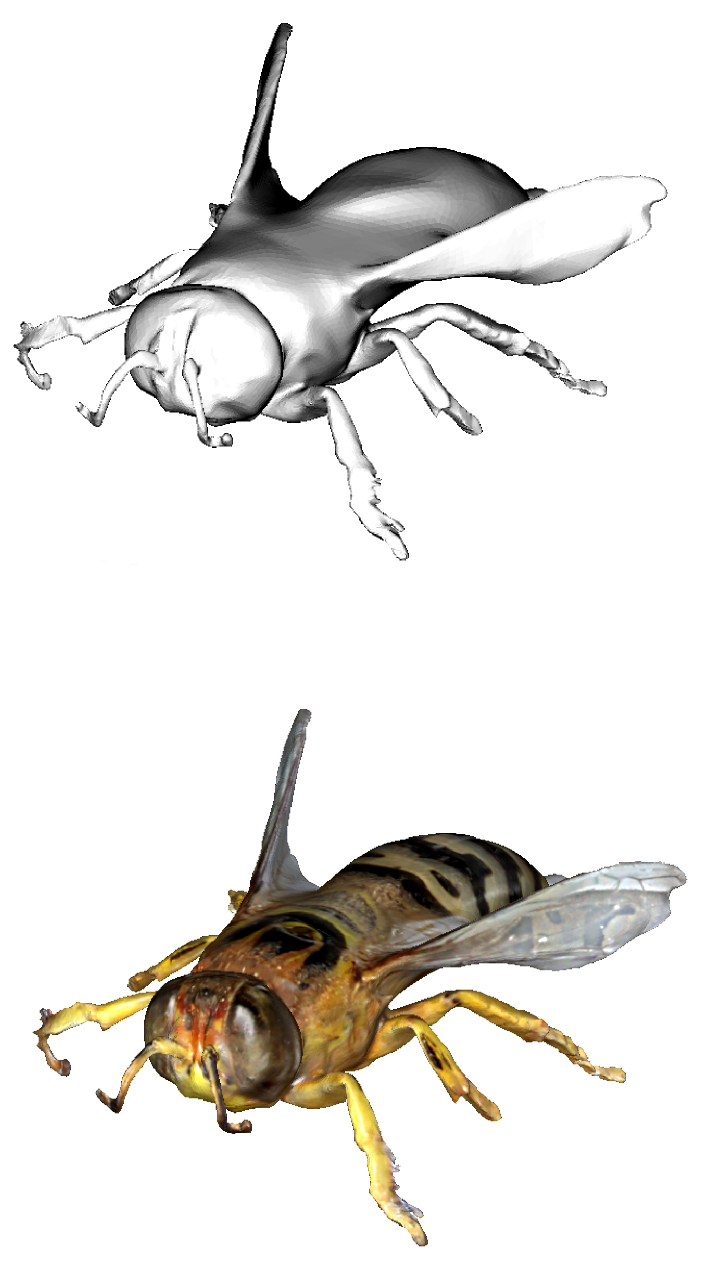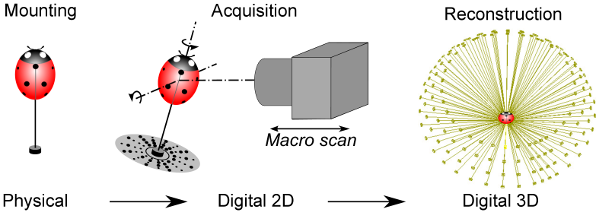Digital ground broken with cheap, simple 3D scanning plan
 Australian scientists have come up with a cheap and easy way to create colourful 3D scans using simple equipment.
Australian scientists have come up with a cheap and easy way to create colourful 3D scans using simple equipment.
The technique could provide a way to build high-resolution computer models with hardware available off-the-shelf at any electronics store.
Researchers at CSIRO have used the innovative method to recreate small bugs and beetles in the digital realm.
Scientists studying insects rely on actual collected specimens, which often have to be shared between scientists using only written descriptions, diagrams, and images.
This information is important in understanding and sharing specimens, but they often lack the precise detail of the actual bug.
The authors of a new study sought to create a cost-effective prototype to produce three-dimensional, naturally coloured, digital models of medium-to-large insects (3 to 30mm in length), using very basic equipment and software.
The prototype scanner captures colour images from different angles and focal depths using a digital single lens reflex (DSLR) camera and a flat turntable.
Software is used to stitch the 2D images into 3D reconstructions.
The resulting 3D models are compact (around 10 megabytes each), have excellent optical resolution, and can be embedded into documents and web pages or viewed on mobile devices.
The authors suggest the system is portable, safe, relatively affordable, complements existing imaging techniques, and reduces the need to handle or ship delicate insect specimens.
Furthermore, they say the technology will open new avenues for research data collection, education, art, entertainment, biodiversity assessment, or biosecurity control.
CSIRO Researcher Dr Chuong Nguyen says; “These 3D models represent high quality visualisations of physical specimens that will enable novel solutions to quickly extract, analyse and share rich information. The 3D models are of great value for biodiversity discovery, species identification, quarantine control, and unlocking big data in our biological collections.”
More information is available in the report published by the journal PLOS One.








 Print
Print